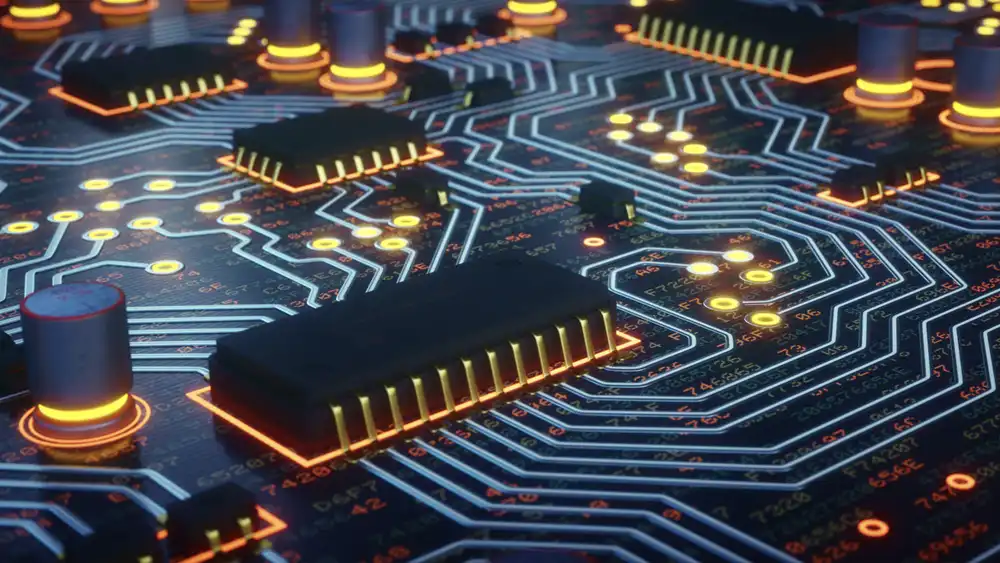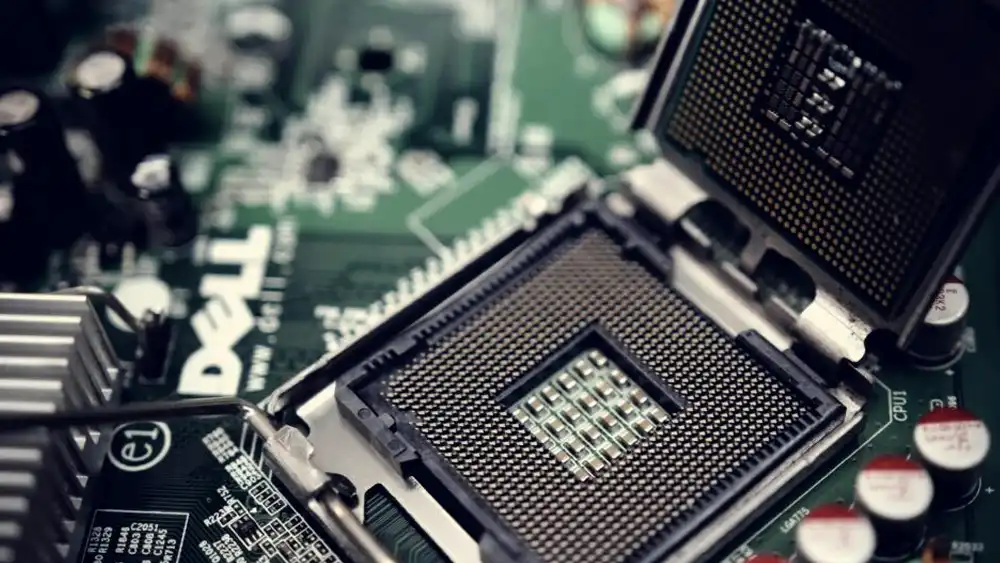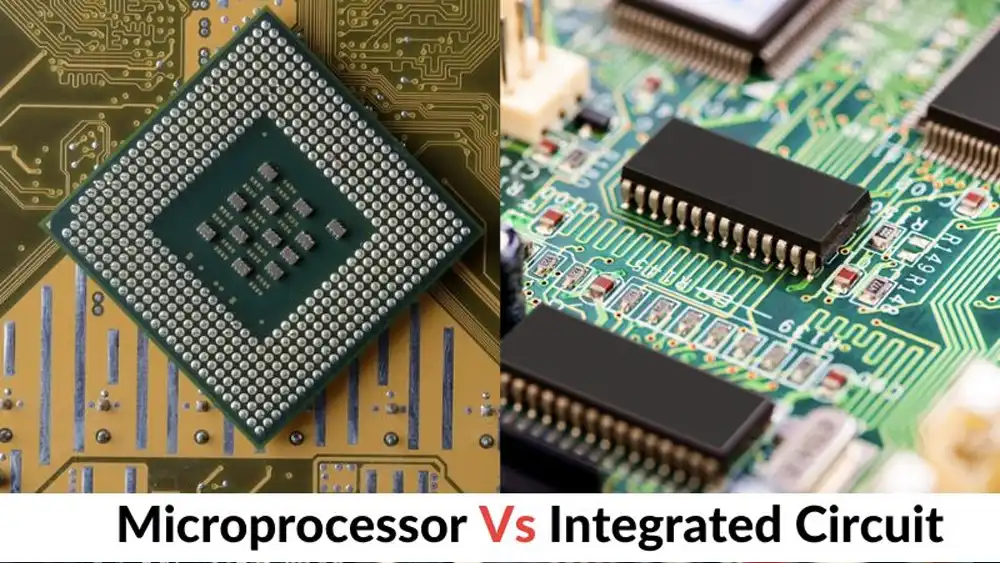In the electronics and computing, understanding the difference between a microprocessor and an integrated circuit is crucial. These terms are often used interchangeably, but they represent distinct components with unique functionalities.
Whether you’re a student, a tech enthusiast, or a professional in the field, grasping these differences can enhance your knowledge and application of these critical components.
What is an Integrated Circuit

An integrated circuit (IC) is a set of electronic circuits on a small flat piece of semiconductor material, typically silicon. It can perform various functions depending on its design, ranging from basic logical operations to complex processing tasks. The integrated circuit has revolutionized the electronics industry, enabling the miniaturization and enhancement of modern devices.
Key Characteristics of Integrated Circuits
- Miniaturization: ICs are incredibly small, which allows for the miniaturization of electronic devices.
- Complexity: They can integrate millions of transistors into a tiny chip, allowing for complex operations.
- Versatility: ICs are used in a wide range of applications, from simple calculators to advanced communication systems.
- Reliability: They are highly reliable and less prone to failure compared to discrete components.
Different Types of Integrated Circuits
Integrated circuits come in various types, each designed for specific applications:
- Analog ICs: Used for amplifying, filtering, and modulating analog signals.
- Digital ICs: Handle digital signals and are used in computers and other digital systems.
- Mixed-Signal ICs: Combine both analog and digital functions on a single chip.
What is a Microprocessor

A microprocessor, on the other hand, is a type of integrated circuit designed specifically to execute a set of instructions, known as a program. It is essentially the brain of a computer, controlling all its functions. Understanding how a microprocessor is different from an integrated circuit is essential for anyone working in technology.
Key Characteristics of Microprocessors
- Programmability: Microprocessors can be programmed to perform a wide range of tasks.
- Processing Power: They have the capability to perform complex calculations and data processing.
- Flexibility: Microprocessors can be used in various applications, from personal computers to embedded systems.
- Integration: Modern microprocessors integrate multiple functions, such as memory management and input/output operations, onto a single chip.
Components of a Microprocessor
A typical microprocessor consists of the following components:
- Arithmetic Logic Unit (ALU): Performs arithmetic and logical operations.
- Control Unit: Directs the operation of the processor.
- Registers: Small storage locations for quick data access.
- Cache: Small, fast memory used to store frequently accessed data.
Differences Between Microprocessors and Integrated Circuits

While a microprocessor is a type of integrated circuit, not all integrated circuits are microprocessors. Here are the key differences between a microprocessor vs an integrated circuit:
Functionality
- Integrated Circuit: An IC can perform a variety of functions depending on its design, such as amplifying signals, performing logical operations, or converting analog signals to digital.
- Microprocessor: Specifically designed to execute instructions and perform computations, making it the core component of a computer’s processing capability.
Complexity
- Integrated Circuit: ICs can range from simple circuits with a few transistors to highly complex systems with millions of transistors.
- Microprocessor: Typically more complex than other types of ICs, as they integrate a control unit, ALU, registers, and cache to perform a wide range of tasks.
Applications
- Integrated Circuit: Used in almost all electronic devices, including radios, televisions, and smartphones.
- Microprocessor: Primarily used in computers, smartphones, and other devices requiring substantial processing power.
Integration
- Integrated Circuit: Can include various types of components, such as resistors, capacitors, and transistors, to form a complete circuit.
- Microprocessor: Integrates multiple functions related to data processing, but relies on other ICs for additional functionalities like memory and input/output operations.
Microprocessor vs Integrated Circuit
| Feature | Microprocessors | Integrated Circuits (ICs) |
|---|---|---|
| Definition | A microprocessor is a central processing unit (CPU) on a single chip. | An integrated circuit is a set of electronic circuits on one small flat piece (or “chip”) of semiconductor material, usually silicon. |
| Function | Primarily used for executing instructions and processing data. | Can perform various functions like amplification, signal processing, and more. |
| Components | Contains the arithmetic logic unit (ALU), control unit, and a small amount of memory. | Can include transistors, capacitors, resistors, diodes, and other components. |
| Complexity | Generally more complex due to its role as a CPU. | Can range from simple (like a 555 timer) to complex (like a system-on-chip). |
| Examples | Intel Core i7, AMD Ryzen | 555 timer IC, operational amplifiers, memory chips. |
| Use Case | Used in computers, smartphones, and embedded systems for processing tasks. | Used in a wide range of applications including audio equipment, networking, and more. |
| Manufacturing | Manufactured with a focus on high-speed processing and advanced lithography. | Manufactured with varying complexity depending on the specific function required. |
| Performance | Focused on high computational performance. | Performance varies based on the function; not always focused on computation. |
| Design Flexibility | Typically designed for specific computational tasks. | Can be designed for a wide variety of tasks including signal processing, amplification, etc. |
| Memory | Contains a small amount of built-in cache memory. | Generally, does not include memory unless it’s a specific type like memory ICs. |
| Power Consumption | Higher power consumption due to intensive processing. | Power consumption varies widely depending on the type and function. |
This table should provide a clear comparison between microprocessors and integrated circuits, highlighting their unique characteristics and uses.
Importance in Modern Technology
Role of Integrated Circuits
Integrated circuits are the building blocks of modern electronics. Their ability to integrate numerous components into a small package has revolutionized the electronics industry, leading to the development of compact and efficient devices. They are crucial in various fields such as telecommunications, automotive, healthcare, and consumer electronics.
Role of Microprocessors
Microprocessors have driven the digital revolution. They are at the heart of personal computers, enabling complex computations and data processing. In addition to personal computing, microprocessors are integral to embedded systems, which are found in everything from household appliances to industrial machinery.
Evolution: From Vacuum Tubes to Microprocessors
The evolution of technology from vacuum tubes to transistors, and then to integrated circuits, paved the way for the development of microprocessors. Each step brought significant improvements in size, efficiency, and performance. The transition from bulky vacuum tubes to compact and reliable integrated circuits marked a significant milestone in the history of electronics.
Conclusion
Microprocessors and integrated circuits (ICs) are fundamental components in modern electronics, but they serve different purposes and possess distinct characteristics. A microprocessor is a specific type of IC designed to execute instructions and process data, acting as the brain of a computer or embedded system. It is highly complex, incorporating components such as the arithmetic logic unit (ALU), control unit, and small memory cache to perform computational tasks efficiently.
On the other hand, integrated circuits encompass a broader category that includes various types of electronic circuits on a single chip. ICs can perform a wide range of functions beyond computation, such as signal amplification, filtering, and memory storage. They can be simple, like a 555 timer, or highly complex, like a system-on-chip (SoC), but their primary purpose is to integrate multiple electronic components to perform specific tasks within a system.
Explore More About Microprocessors and Integrated Circuits
Understanding the differences between microprocessors and integrated circuits is crucial for anyone involved in electronics, computer engineering, or related fields. Whether you are designing a new computing system or developing a sophisticated electronic device, knowing how to leverage these components can significantly impact your project’s success.
Discover More:
- Microprocessors: Dive deeper into the architecture and functionality of microprocessors, and learn how they drive the performance of modern computing devices.
- Integrated Circuits: Explore the diverse applications of integrated circuits and understand how they can be used to innovate and enhance electronic systems.
Enhance your knowledge and skills in electronics by studying these essential components and their applications. Visit [relevant website or resource] to start your journey into the fascinating world of microprocessors and integrated circuits.